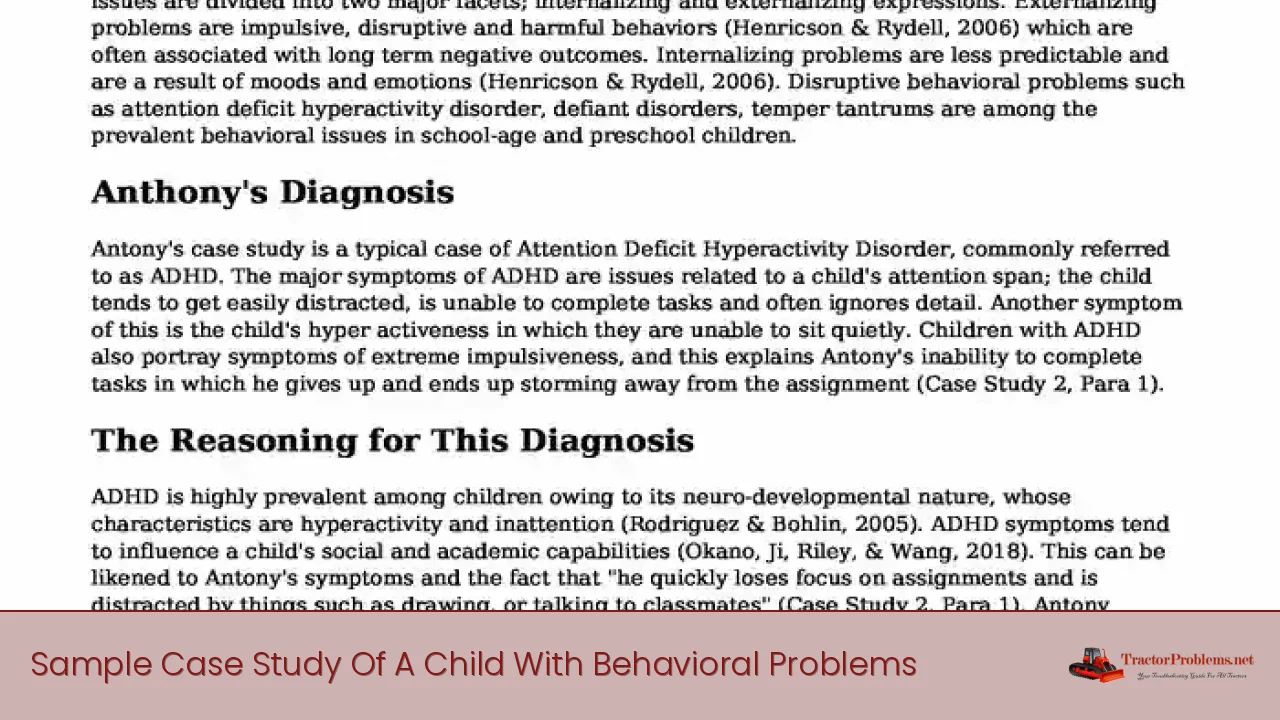The case study of a child with behavioral problems can be a complex and difficult endeavor. By exploring a sample case study, we can gain insight into how to best approach the child’s behavioral issues. By looking at the root causes and underlying factors, we can develop effective strategies to support the child in their journey of healing.
Understanding and Supporting a Child With Behavioral Problems: A Sample Case Study
When faced with a child exhibiting behavioral problems, it can be difficult to know how to best support them. While every child is unique, a sample case study can provide a valuable starting point for understanding the factors that contribute to their behavior and developing effective strategies for helping them heal. In this article, we’ll explore a sample case study of a child with behavioral problems in order to gain insight into how to best approach the situation.
| Root Causes | Underlying Factors | Strategies |
|---|---|---|
| Family dynamics | Mental health conditions | Therapy and counseling |
| Lack of structure | Environmental stressors | Positive reinforcement |
| Traumatic experiences | Substance abuse | Developing a support system |
Family History
The family history is an important factor to consider when trying to understand a sample case study of a child with behavioral problems. In this particular case, the family was reported to have a history of substance abuse, mental health issues, and domestic violence. These factors can create an environment where the child is exposed to negative influences and experiences, which can shape the development of their behavior.
Cultural Background
The cultural background of the child can also play a role in determining the root causes of the child’s behavior. In this sample case study, the child was from a low-income family with a diverse cultural background. This can present challenges in terms of communication, as well as a lack of access to resources and support.
Social Environment
The social environment can also be a contributing factor to the child’s behavior. In this sample case study, the child was reported to have limited access to social activities, such as organized sports or clubs. This lack of socialization can lead to feelings of isolation, which can be a contributing factor to their behavior.
Developmental History
The developmental history of the child is another important factor to consider when trying to understand the root causes of their behavior. This sample case study found the child to have a history of delayed development, which could be indicative of underlying neurological or physical issues. These issues can affect the child’s ability to process and respond to stimuli, which can lead to behavioral problems.
Educational History
The educational history of the child can be a key factor in determining the root causes of their behavior. In this sample case study, the child was found to have difficulty in school, which could be related to their developmental history or family background. By exploring these factors, we can gain insight into how to best support the child in their educational journey.
Key Takeaways From Sample Case Study Of A Child With Behavioral Problems
- It is important to consider the family dynamics, cultural background, social environment, developmental history, and educational history of the child when trying to understand the root causes of their behavior.
- The family history, such as substance abuse, mental health issues, and domestic violence, can create an environment which can shape the development of the child’s behavior.
- A lack of access to social activities and resources, as well as delayed development, can contribute to feelings of isolation and behavioral problems.
- Therapy, counseling, positive reinforcement, and developing a support system can be effective strategies for helping children with behavioral problems.
By understanding the family dynamics, cultural background, social environment, developmental history, and educational history of a child, it is possible to gain insight into the root causes of their behavioral problems. In this sample case study of a child with behavioral problems, we saw how these various factors can contribute to feelings of isolation or difficulty in school, and how they can be addressed through therapy, counseling, positive reinforcement, and developing a support system. It is evident that by taking a holistic approach and considering the child’s individual circumstances, it is possible to be better equipped to provide the necessary support and help to address the child’s needs.
Conclusion: Taking a Holistic Approach to Helping Children With Behavioral Problems
We have seen how a sample case study of a child with behavioral problems can provide insight into the various factors that can contribute to their behavior. By taking a holistic approach and considering the family dynamics, cultural background, social environment, developmental history, and educational history of the child, we can be better equipped to provide the necessary support and help to address their needs. This case study has shown us that understanding the individual circumstances of a child can be the key to helping them overcome behavioral problems.
